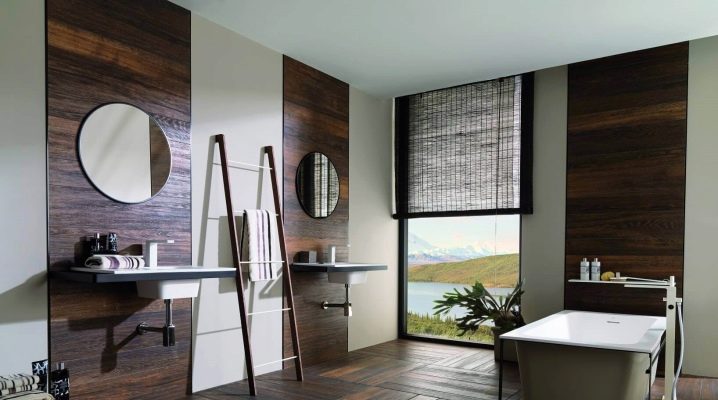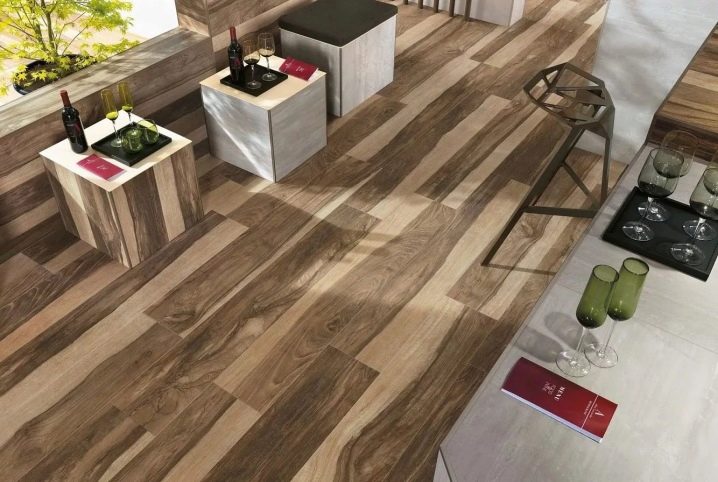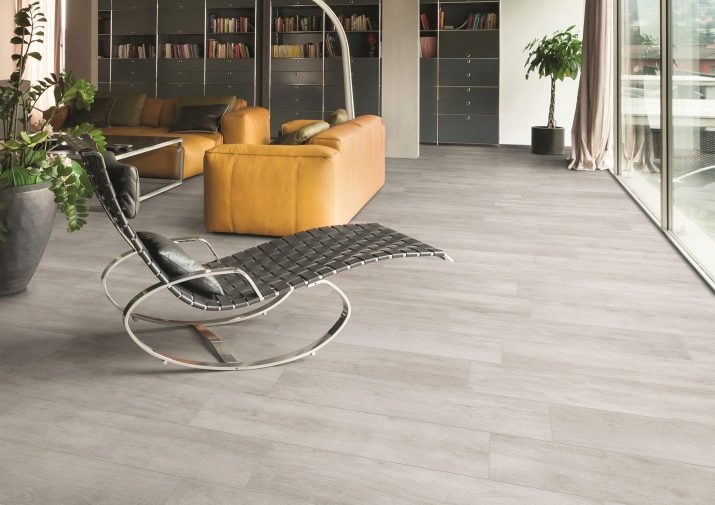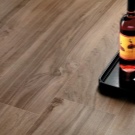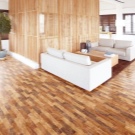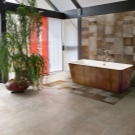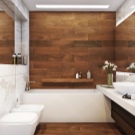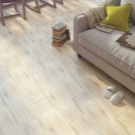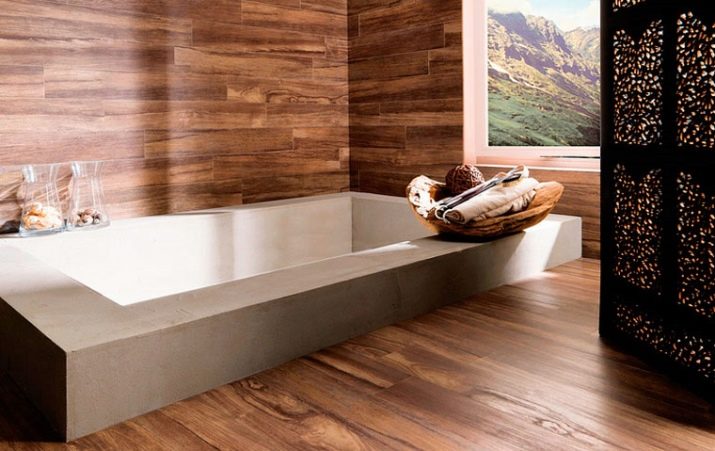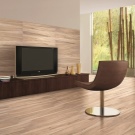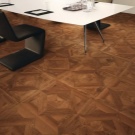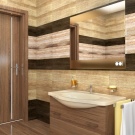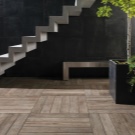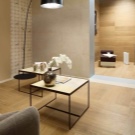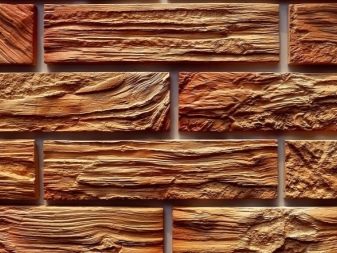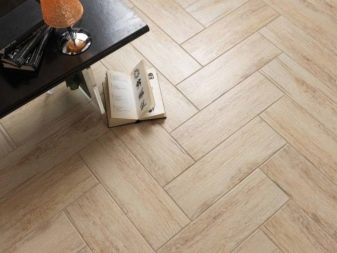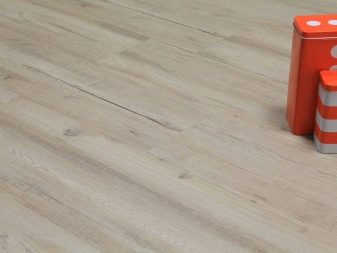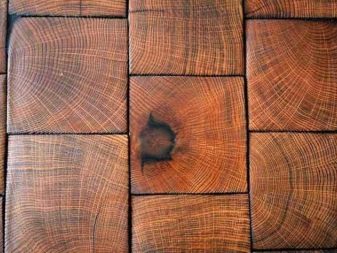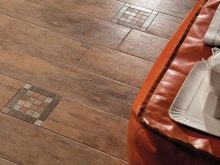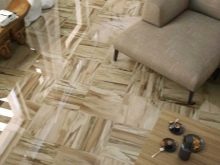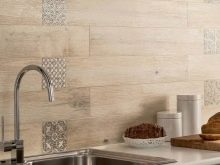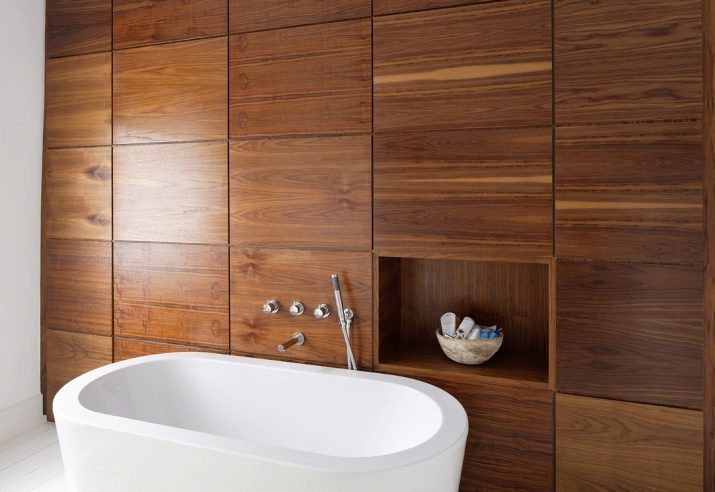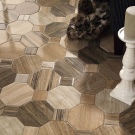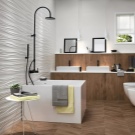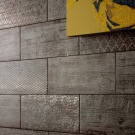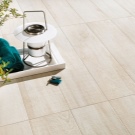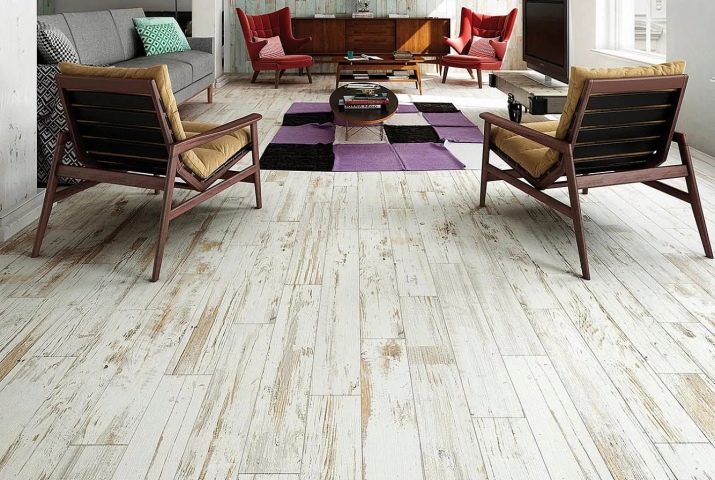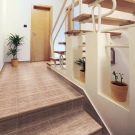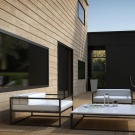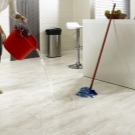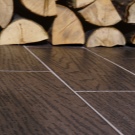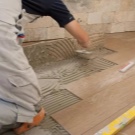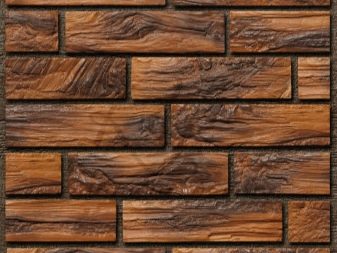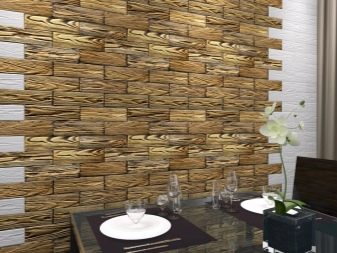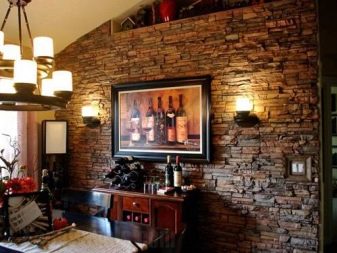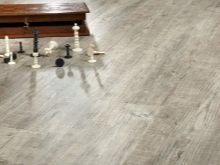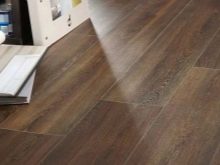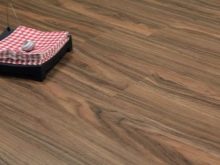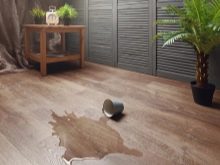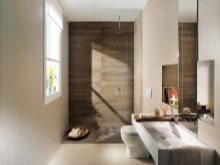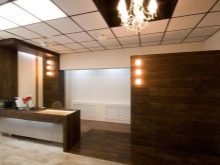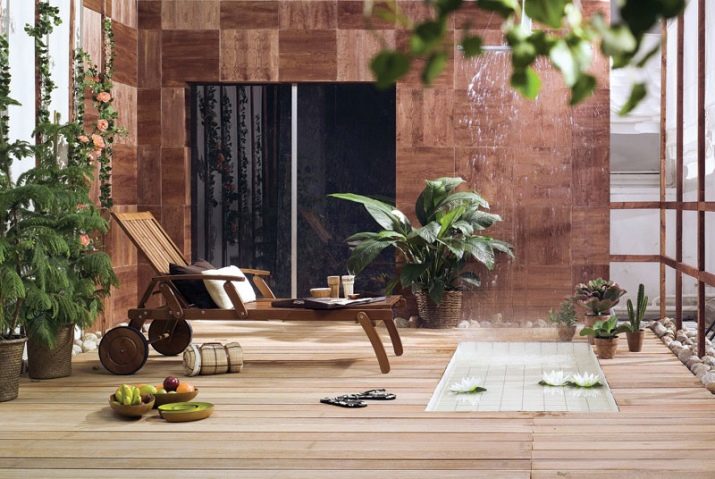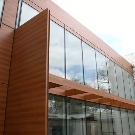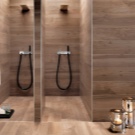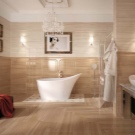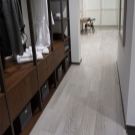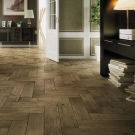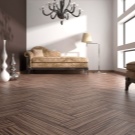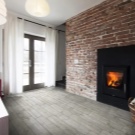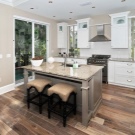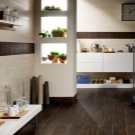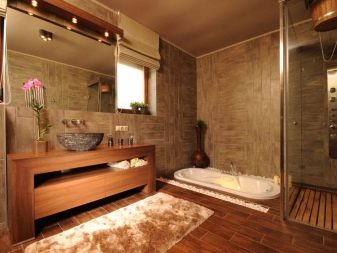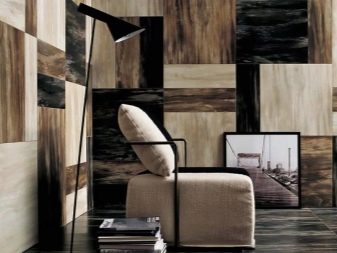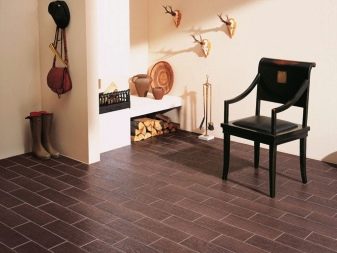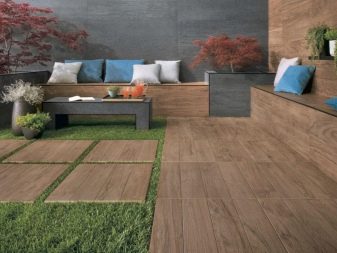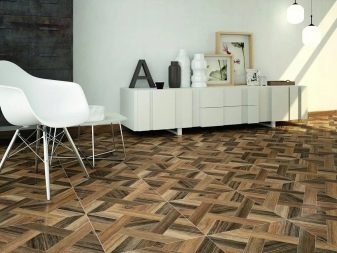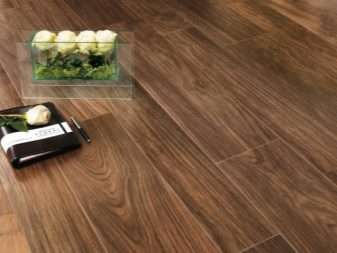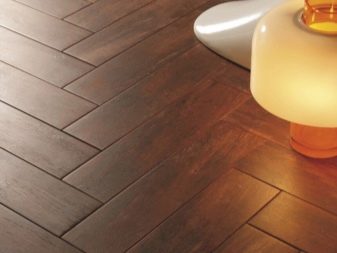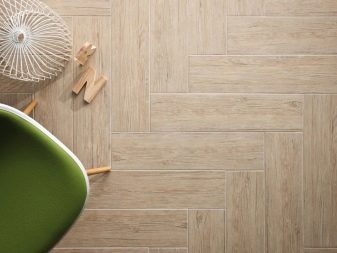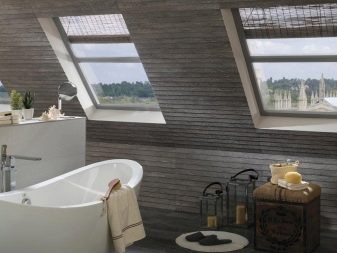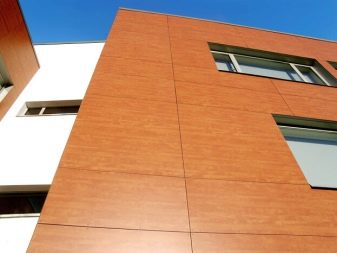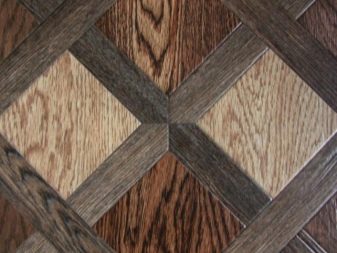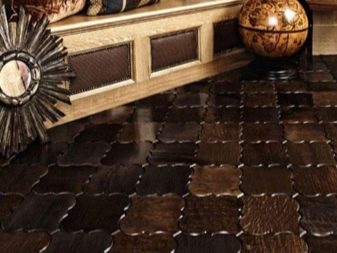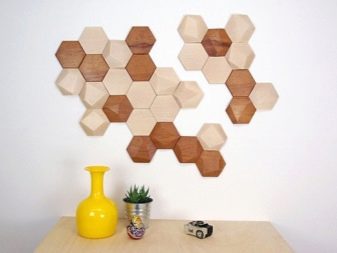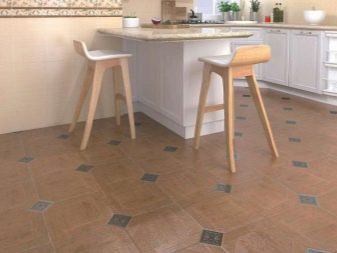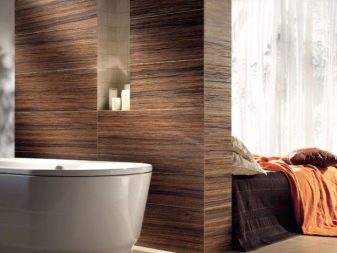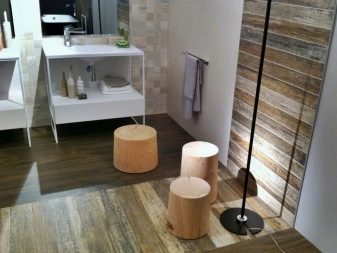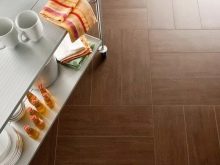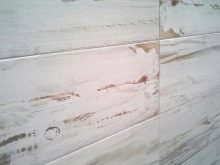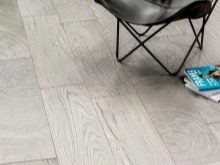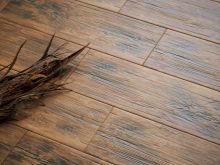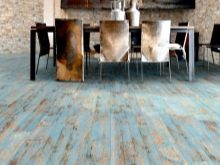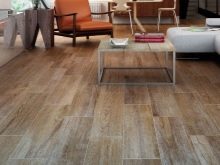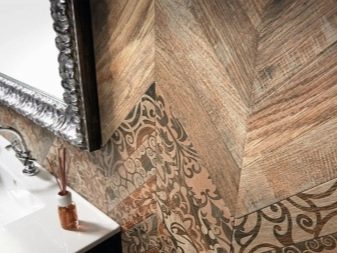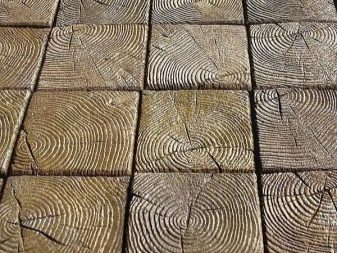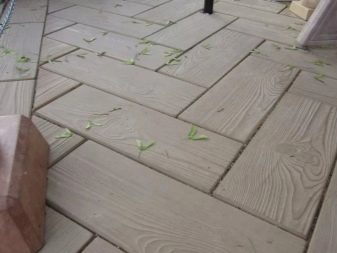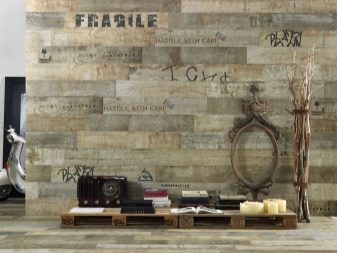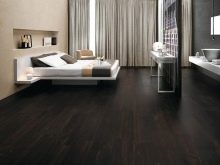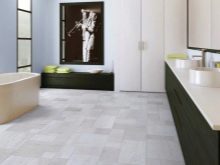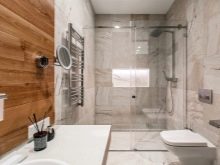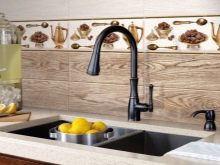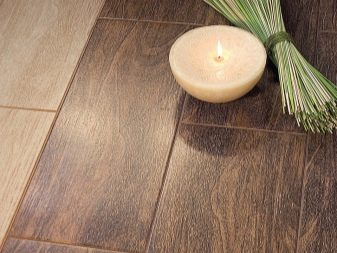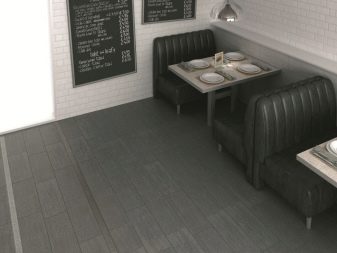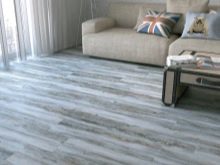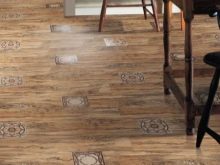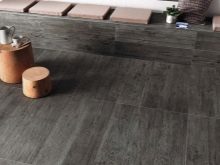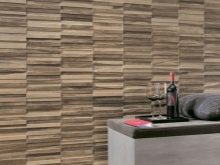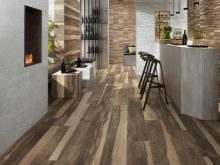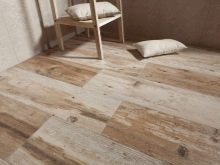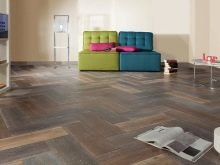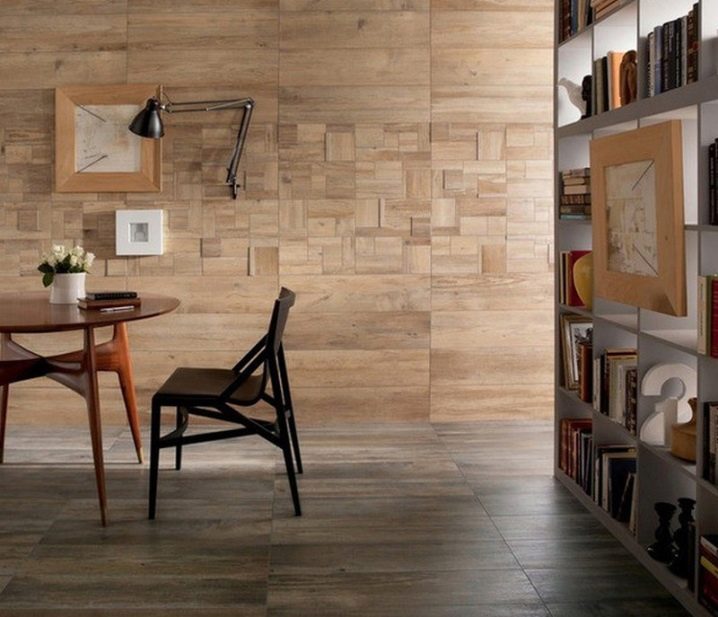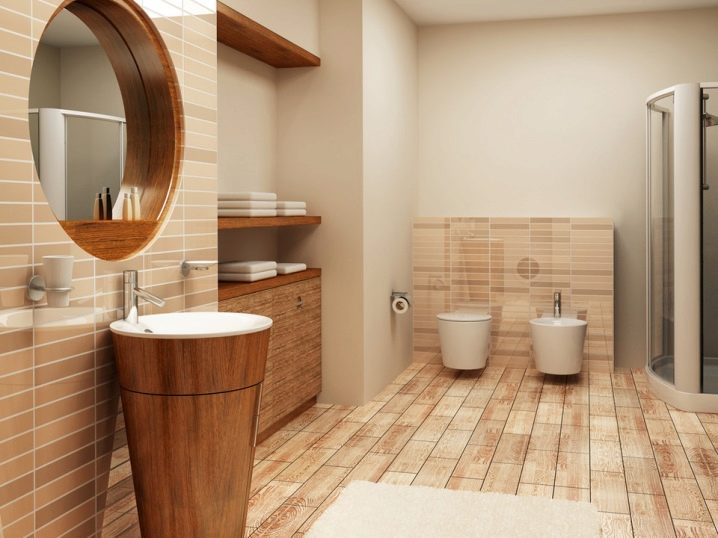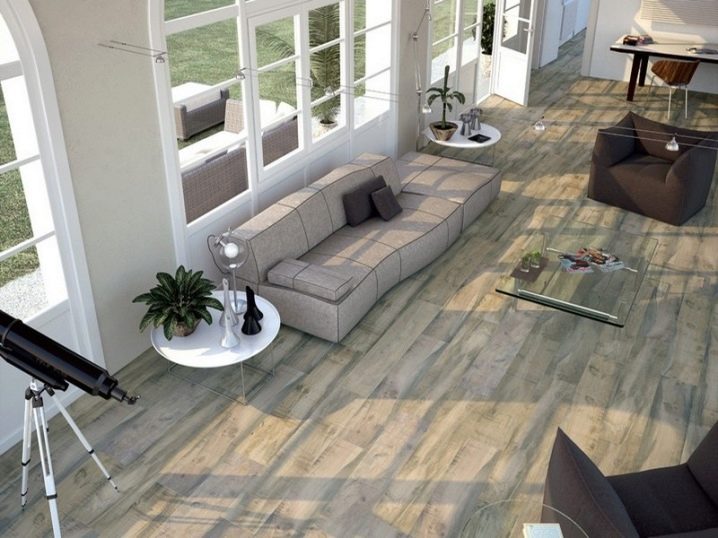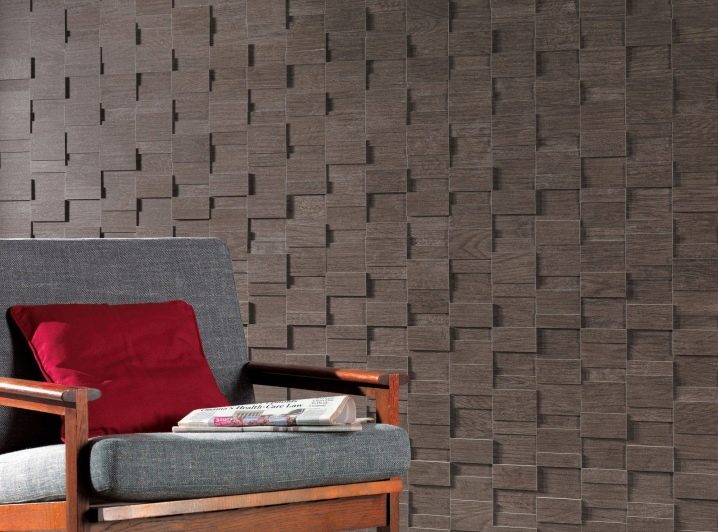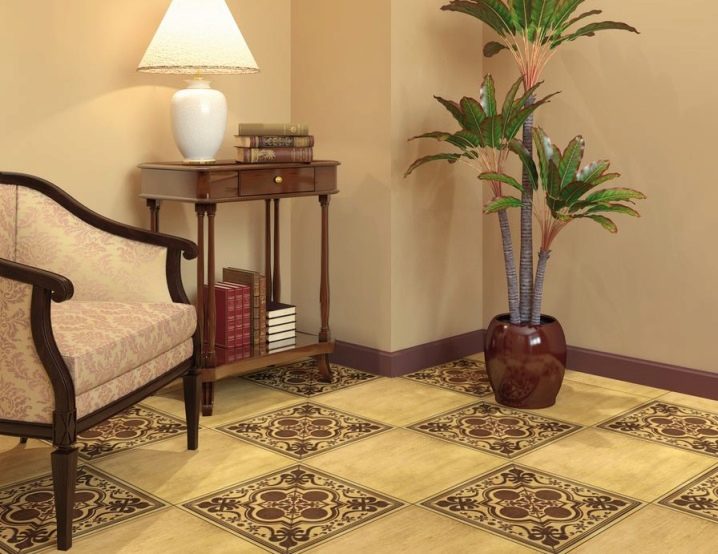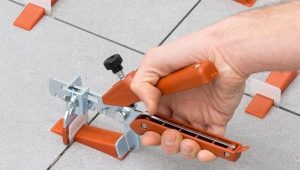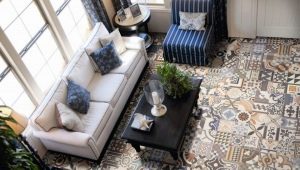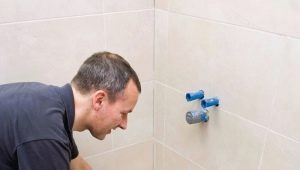Tiles under the tree in interior design
Tiles under the tree in the interior design is not only aesthetically attractive, but also practical. Tile coating has a higher performance than natural wood. Such material can be used not only for cladding walls, but also as a floor covering, as a cheaper alternative to parquet.
Special features
Tiles with the effect of wood are more convenient and easier to use and maintain than wood itself. Such a product can be used for exterior and interior decoration, including in rooms with high humidity levels. Tile perfectly imitates the texture of natural wood, it is visually quite difficult to notice the difference. The surface of the product can have a certain pattern and shade that allows you to choose the material to suit your taste preferences.
The finished coating will have the properties of the material used in the manufacture of tiles. Most often it is pottery or porcelain.
The tile with effect of a tree of the majority of types has a number of advantages in comparison with natural wood:
- long service life;
- environmental friendliness;
- moisture resistance;
- resistance to high temperatures;
- a wide range of colors and textures;
- low cost;
- resistance to mechanical stress.
The main disadvantage of tile material for wood is a cold surface. This disadvantage can be easily corrected by installing a floor heating system.
Materials
Decorative coating with imitation of the structure of wood is made of various materials, which affects the quality and some properties of the product. Basically, such tiles are of the following types:
- ceramic;
- from ceramic granite;
- gypsum;
- based on polyvinyl chloride.
Ceramic tiles with imitation wood surface is made on the basis of clay. White quartz material and feldspars are used as additional components. The following types of decorative coating with wood effect are produced:
- single firing with coating on the surface during the production of a layer of glaze;
- double roasting with a glazed surface;
- unglazed ceramics.
Tiled flooring is environmentally friendly and non-toxic material. Thanks to the production technology and the raw materials used, various bacteria and fungi do not accumulate on the surface of the product and do not spread. Glazed tiles are resistant to dirt and household chemicals.
Ceramics has a long service life and ease of maintenance. Over the years, the tile retains its original appearance. The coating is resistant to fading or discoloration under the influence of external factors. Also, this coating is quite durable, which indicates its resistance to abrasion and mechanical stress.
Ceramic granite coating is more durable and quality than tiled. For the manufacture of these types of tiles used similar raw materials, but in different proportions. There are significant differences and production technology. Ceramic granite firing occurs at higher temperatures and under high pressure, which affects the technical characteristics of the finished product. The advantages of this material include:
- High strength. With proper installation, the surface can withstand loads of several hundred kilograms per square centimeter. Also, such material is resistant to cracking or chipping.
- Frost resistance. This coating can be used for exterior decoration or lining of cold rooms.
- Ease of care. The surface is resistant to dirt and stains, and is also not sensitive to chemicals.
- Moisture resistant and long service life. As well as with high-quality installation, the interdigital seams will be practically invisible, since the material has clear and perfectly even edges.
Gypsum has good plasticity, which makes such a material convenient for the production of tile coatings. Decorative plaster tiles can imitate a variety of materials: brick, natural stone, leather, wood. It should be noted that the gypsum product with the effect of wood is not so common: mainly models with imitation of brickwork or stone are produced.
With the help of gypsum, you can ideally convey the texture of a material, which distinguishes this type of tile coating from ceramic tiles.
The following advantages of gypsum finishing material can be highlighted:
- easy installation;
- low cost;
- has a small weight, which allows not to create a large load on the walls.
Plaster coating can not be used in all rooms. Such a material is not resistant to moisture and is brittle, which significantly narrows the scope of this coating.
PVC tiles are used only for floor cladding. The composition of this material includes the same components that are used in the manufacture of linoleum. This coating consists of several layers:
- the basis with the put drawing;
- transparent polyurethane layer;
- protective.
PVC wood imitation tiles perfectly imitate floorboard or laminate. The advantages of this material include:
- ease of installation;
- good level of moisture resistance;
- excellent wear resistance;
- low cost;
- crack resistance;
- good noise insulation characteristics.
In addition to a number of advantages, this material has its drawbacks. PVC tiles can not be called completely environmentally friendly, although the product contains harmful components in an amount that is safe for human health. In addition, this coating does not have a long service life and is sensitive to the effects of solvents.
Scope of application
In contrast, it is natural wood, tile wood is a wider scope of application. Tiled material can be used both inside and outside the premises. In addition, such a product has better moisture resistance than wood, which allows bathrooms to be covered with decorative material.
A large selection of shades and patterns on the surface of the product allows you to choose the right fit for any interior and for any room. Wall tiles are used mainly for facing the hallway and bathroom. In the living room or in the kitchen will look beautiful floor with imitation of wood.
The tiled floor has stripes on the outside that mimic the wood structure. With this feature you can influence the visual perception of the room. It is better to lay tiles on the wall in such a way that the lines in the drawing are transverse, which will visually make the room larger.
With the help of tile under the tree, the bathroom can be designed in the style of a waiting room.For the corridor it is more practical to choose a floor covering with high resistance to abrasion and darker shades.
Also, the product is perfect for finishing the steps of the porch and terrace. For such purposes it is better to use thickened porcelain stoneware.
Dimensions
Tiles with the effect of wood can be used to finish walls, floors, as well as when conducting exterior repair work. Depending on the purpose of the model, the shape and size of the coating differ. Floor tiles are most often available in the following formats:
- A square with side dimensions of ten, thirty, forty-five or sixty centimeters. A square product can imitate a flooring pattern or a mosaic of wood.
- In the form of long boards with sizes of ten to sixty, thirteen to eighty, twenty to eighty, twenty to one hundred twenty, nineteen to one hundred fifty and twenty five to one hundred fifty centimeters.
- Narrow small plates imitating the floorboard, with dimensions of five to twenty, seven and a half to twenty and eight to thirty centimeters. Porcelain stoneware floor tiles are most often produced with the dimensions of the sides fifteen to sixty centimeters, which allows you to imitate parquet.
Wall ceramic tile most often has a size of 20x60 centimeters. For facing facades and interior trim tiles produced are quite large. Most often it is a rectangle with sides one hundred and twenty by two hundred forty centimeters or a square with sides one hundred twenty centimeters.
Tiles under the tree are produced not only in the form of boards of various sizes. The material can be made in the following formats:
- a regular geometric shape in the form of a square or rectangle;
- in the form of various figures;
- with cut corners;
- hexagon;
- large format tiles.
Many manufacturers produce special curbs for their tiled wood coverings. The border will give the finish a finished look and protect the gaps between the tile and the wall from moisture penetration.
Style and design
The coating with the effect of natural wood is available in a fairly wide range. The surface of a tile can have the most various shades and drawing which imitate this or that breed of wood. When choosing the color and structure of the coating, you should pay attention to the following factors:
- interior design style;
- the level of natural and artificial lighting in the room;
- the shape and size of the room.
The color of the material has many variations of shades from the lightest (almost white) to dark (almost black wenge tone). The tile covering, unlike a tree, can have not only shades of natural wood, but also non-standard coloring and texture. By color and design, the following types of material can be distinguished:
- Shades of brown.
- Gradation from white to beige.
- Variations of gray.
- Imitation of color and texture of natural wood.
- Imitation of aged wood with a worn effect surface. Imitation of the old coating also implies the presence of cracks and grooves on the outer layer of the material.
- Tile under the laminate or in the form of floorboard. Such material has large dimensions and suggests the option of seamless installation, which allows you to create the effect of a real wood floor.
- Covering with a decor on a surface in the form of patterns or drawings.
- In addition to products for interior decoration, materials for exterior work are also produced. For example, a tile for laying of sidewalks with imitation of a cut of a tree.
- Designer models of tiled coatings can have inscriptions or stamps on the surface.
- The surface of wood tiles can be both matte and glossy.
Dark color tile flooring is best combined with light colored furniture and vice versa. When choosing a suitable shade of coating, you can use the following recommendations:
- Dark shades (oak, dark brown zebrano, wenge) are well suited for large rooms.
- In order for a small room to look more visually, you need to choose a material that imitates light wood species (birch, teak). Drawing on the coating should not be too conspicuous.
- In modern interiors in the style of hi-tech or loft look good cover gray shades.
- For finishing the bathroom material suitable more restrained, neutral shades.
- The kitchen will look good tile warm tones.
- You can combine tile material of different shades. In this case, it is worth making laying herringbone.
In the house of the timber tiles under the tree will emphasize the natural interior design. Manufacturers produce individual collections with a set of a small number of tiles,which fold into a certain pattern. The living room will look spectacular floor panels of tiles in the center of the room.
Manufacturers
Almost every manufacturer of tile materials has a separate line of products with wood imitation. World leaders in the production of ceramic tiles are countries such as Spain and Italy. It is worth noting that in Russia there are a number of plants that produce at least quality ceramic coatings.
- One of the leaders in the Russian market for the production of finishing materials is the firm Kerama Marazzi. It should be noted that the decorative coatings of Kerama Marazzi are realized not only in Russia, but also abroad. In the manufacture of tiles, the company uses Italian technology. Kerama Marazzi launches a separate collection of porcelain stoneware tiles with imitation wood. The company is ready to offer a wide range of shades, shapes and sizes of such a coating. In addition, a large range of prices allows, if necessary, to choose a budget version of the material.
In addition to tile coatings, Kerama Marazzi is engaged in the production of additional decorative elements.It can be borders for a tile, ready panels, various decorative inserts.
- Among the Italian manufacturers can distinguish the company Atlas Concorde. The company produces and sells ceramic tiles since 1969 and for many years has been one of the world leaders in the industry. Atlas Concorde porcelain stoneware products are distinguished for their high quality and beautiful appearance. The tile from the collection of ceramic granite with the effect of wood perfectly imitates the shades of natural wood, as well as its structure. This line includes several collections, each of which is different shades and patterns on the surface of the material.
- One of the leading Spanish companies in the production and sale of decorative finishing materials is the company Pamesa The products of this company are manufactured in a wide price range and have many shades, shapes and textures. The ceramic tile of Pamesa differs in original design: many eminent designers and artists on ceramics work on its development. The company Pamesa produces several collections of tile covering with imitation wood.The surface of such material is of two types: matte or semi-polished. There are both standard models of tiles with shades of natural wood, issued in the form of floorboard or laminate, and rather original products of non-standard shapes and patterns complete with borders or panels.
Beautiful examples in the interior
The harmonious combination of floor and wall tiles of different colors with the effect of wood.
Covering delicate shades in the bathroom, designed in a rustic style.
Bright tiles in the interior of the living room are not visually distinguished from wooden coatings.
Wall ceramic tiles with imitation of laying a log from a bar.
Ceramic coating under the tree with a pattern in the form of original patterns.
On the subtleties of marking ceramic tiles under the tree, see below.
